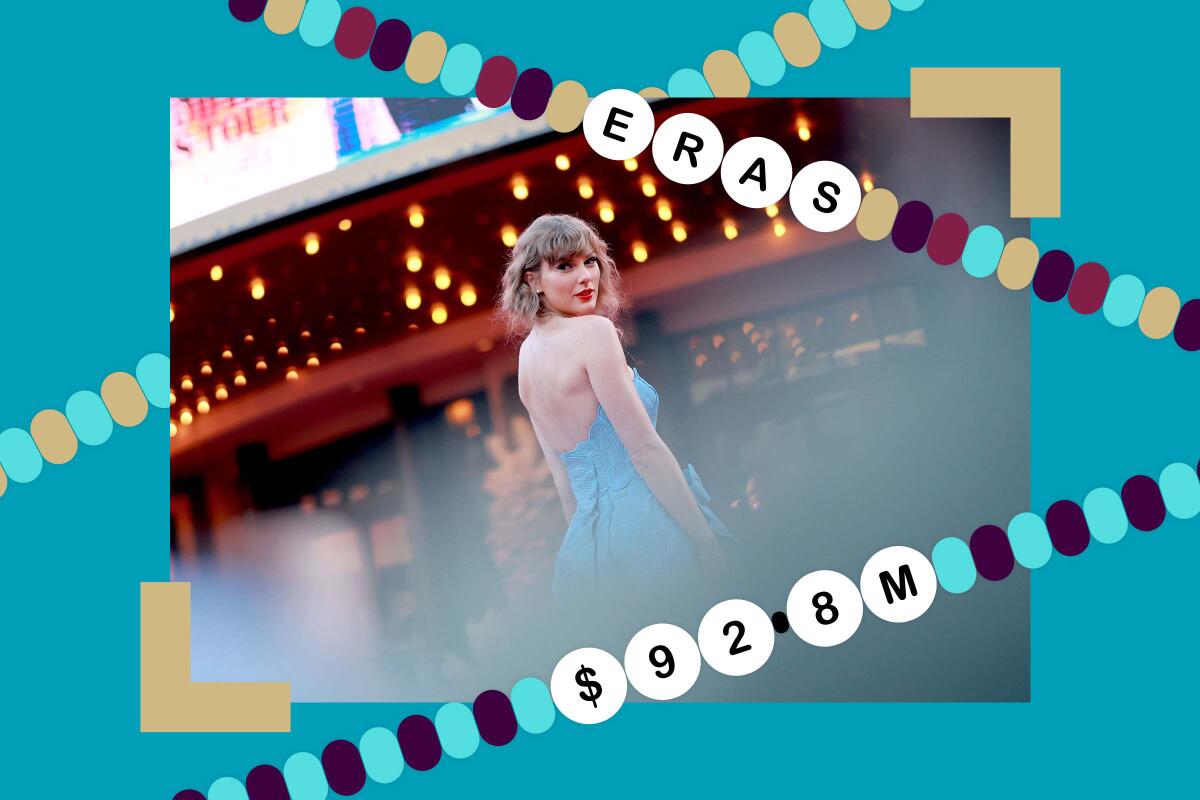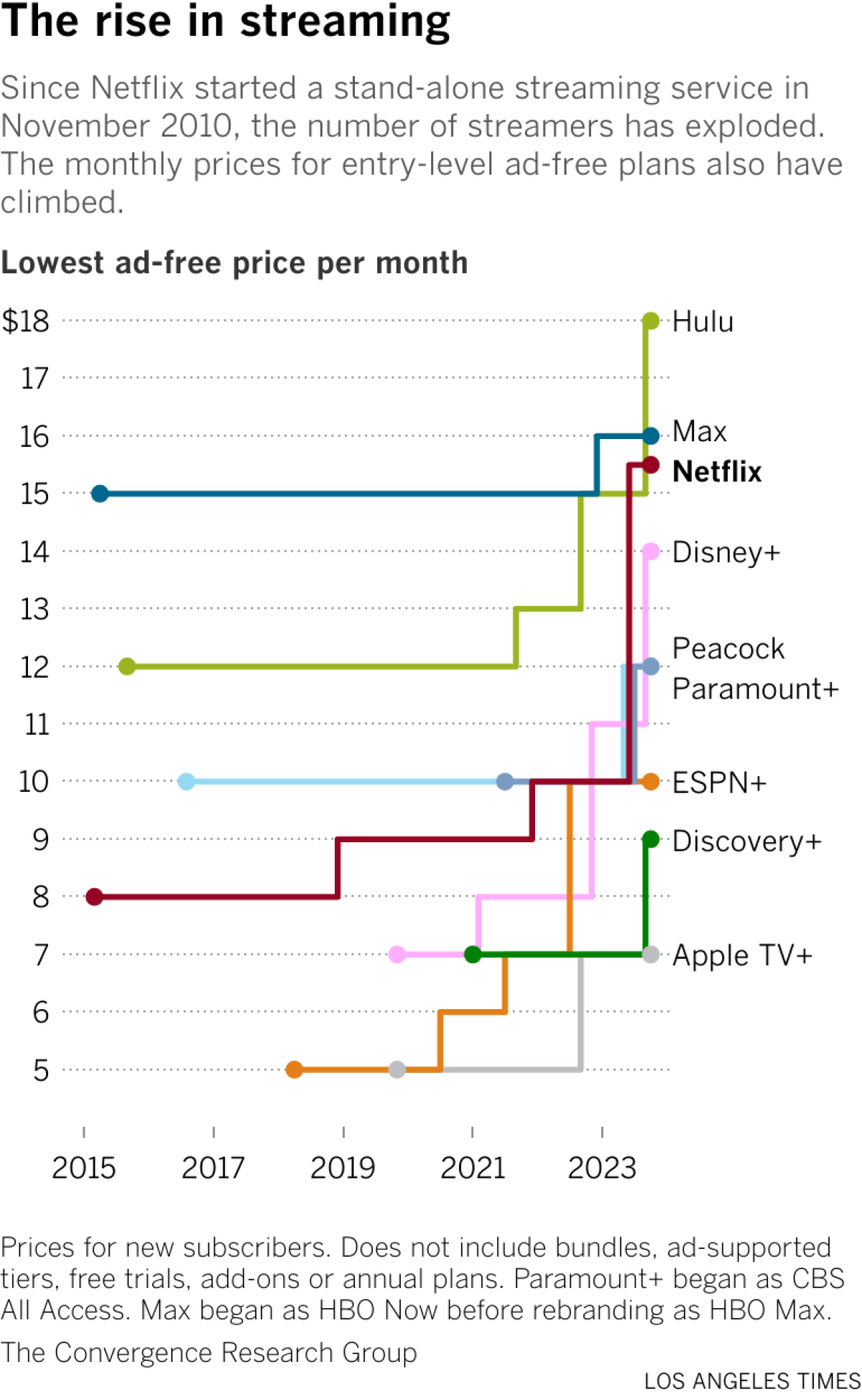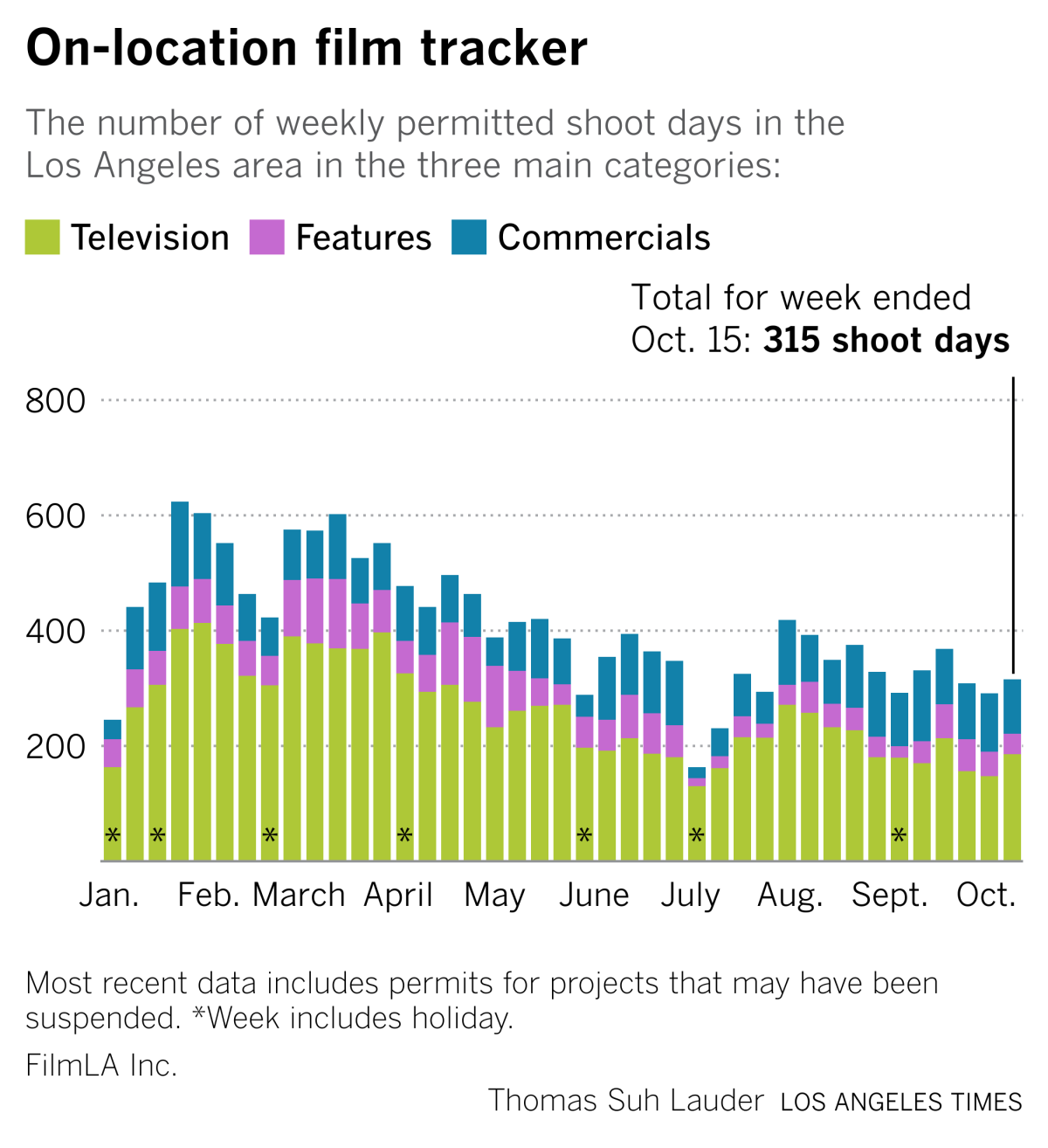Taylor Swift’s Eras Tour movie was big at the box office. Here are some takeaways

Welcome to the Wide Shot, a newsletter about the business of entertainment. Sign up here to get it in your inbox.
The official numbers for Taylor Swift’s Eras Tour movie are in, and they’re big. Just not quite as big as previously thought. The two-hour, 48-minute documentary’s box office tally came in at $92.8 million from the U.S. and Canada through Sunday, compared to the $95 million to $97 million estimated earlier.
That’s still enough to make “Taylor Swift: The Eras Tour” the highest-grossing concert film ever domestically, not adjusting for inflation, though not the biggest October opening weekend (that title still belongs to “Joker,” with its $96 million domestic debut four years ago). Swift topped the entire $73-million run of “Justin Bieber: Never Say Never” to become the concert doc record-holder.
Some analysts had expected a much bigger number from “Eras,” given the multigenerational appeal of the concert tour. One prognosticator put out an especially bold projection of $150 million.
The overwhelming T-Swift hype sweeping the country is partly to blame for those inflated expectations.
Strong early presales numbers got the industry too excited. Advance sales accounted for 60% of the opening-weekend revenue, according to EntTelligence, compared with about 40% for most other giant blockbusters. That and the fact that the audience skewed heavily female likely threw off distribution execs’ statistical modeling going into the weekend. Prerelease box office tracking is unreliable enough as it is.
Notwithstanding the business’ money goggles, a weekend finish of $93 million — $123.5 million including international sales — is an impressive feat, considering hardly anyone knew the film existed until Swift announced it to her enormous following on Aug. 31.
Swift eschewed the typical Hollywood system by dealing directly with the world’s largest theater chain, AMC Entertainment, to release the picture. AMC allowed other exhibitors to show the film as well by working with “RRR” distributor Variance Films. Theater operators, amid a shortage of movies from studios, have advocated for alternative programming “events” that draw infrequent moviegoers. Swift’s film is that on a giant scale.
The unusual arrangement certainly benefited Swift. About 57% of the box office goes to Swift and AMC’s distribution fee (mostly Swift), with the remaining 43% landing in theaters’ coffers, whereas ticket sales typically are split roughly 50-50 between the studios and the exhibitors. Not a bad take for Swift, on top of what she made from the Eras Tour itself, which is projected to clear more than $1 billion in grosses.
AMC scored from its deal as well, with its theaters accounting for 40.5% of the domestic total (its market share is normally 22% to 25%). Only a few of the top 100 theaters for the title were not in AMC’s circuit.
The Swift pact was yet another eye-catching move for “meme stock” AMC and its quirky chief executive, Adam Aron, who previously made waves by promoting NFTs and investing in a literal goldmine, and this year courted controversy among investors for its stock-conversion plan. (Last week, he used X, formerly Twitter, to disclose that he was targeted by an extortion plot.)
Whether there are any lessons to learn from the weekend is hard to say. Having an actual studio involved would’ve meant a more traditional marketing push for “The Eras Tour,” whereas Swift’s was more social media-based. Would a broader promotional campaign have increased business, particularly among those not in the target demographic?
With the Eras Tour movie, Swift created one of the few products on Earth that requires hardly any marketing. At this point, consumers know whether or not they’re interested in seeing three hours of the “Cruel Summer” singer on the big screen. It seems unlikely that a phalanx of TV spots would’ve convinced many males over 35 that this was going to be the second coming of “The Last Waltz.”
It’s hard to even compare “The Eras Tour” to other concert films, a genre that’s having a bit of a moment right now. A24’s legacy release of Talking Heads’ “Stop Making Sense,” directed by Jonathan Demme, hit its target market of film devotees, music nerds and Gen X nostalgics. Beyoncé Knowles-Carter is bringing her Renaissance tour to theaters via an agreement with AMC that’s similar to Swift’s.
But Swift has unique appeal. The NFL is using her star wattage to bring more attention to football, as if the sport needed the boost. Her and Travis Kelce’s cameos on “SNL” generated further buzz for the show and the couple.
Thanks to Instagram and TikTok, the Taylor-fication of theaters was hard to miss.
An influx of Swifties created a party-like atmosphere, with fans coming decked out with costumes and friendship bracelets and dancing in the auditoriums, which, as long as people came to the multiplex for that experience, doesn’t seem to be a real cause for concern among people who care about in-theater decorum. Let’s not let anyone’s view of the cinema as a temple get in the way of someone else’s good time.
“Customers were dressed up in their shimmer and so many fun outfits,” said B&B Theatres executive Brock Bagby in an email. “We had customers singing and dancing in the aisles. It was a really neat moment in time for us and our industry.”
Take a picture of the screen during Martin Scorsese’s “Killers of the Flower Moon,” on the other hand, and you’ll get another type of reaction.
Stuff we wrote

Disney at 100: Seven ways Walt’s company forever changed entertainment. From theme parks to animation and kids programming, the Walt Disney Co. has revolutionized the entertainment business since its launch a century ago. For more: Here’s a timeline of key events in the Burbank company’s history.
Fake court records. Forged signatures. Head of celebrity-fronted travel company confronts fraud claims. A convicted felon started a LGTBQ+ travel company with a “Mean Girls” star and an “Amazing Race” runner-up. Now he faces questions about his past.
Microsoft acquires Activision Blizzard in $69-billion gaming deal. The tech giant’s purchase of “Call of Duty” maker Activision Blizzard marks the biggest deal in video game industry history. For more: What the Microsoft Activision deal means for labor unions.
Horrific images from Israel-Hamas war pose challenges for TV news. The Israel-Hamas war is testing news media struggling with how to present the heinous casualties and combat misinformation on social media.
SAG-AFTRA talks break down over streaming pay in a setback for Hollywood’s back-to-work plans. Negotiations between the actors union and the studios hit a snag last week, ending with the AMPTP saying it had suspended negotiations. Here’s what happened.
WME vs. CAA. Endeavor’s Ari Emanuel spoke out at last week’s Bloomberg Screentime conference about Hamas’ terror attack on Israel. He also blasted CAA’s leadership over Julia Ormond’s lawsuit saying top agents, including co-chairman Bryan Lourd and Kevin Huvane, discouraged her from coming forward about an alleged sexual assault by Harvey Weinstein. Lourd responded, calling Emanuel “incredibly performative.” CAA has denied the allegations.
Can you tell which script was written by AI? Under the terms of the WGA’s new contract, AI is here to stay — with limits. For more: Senators draft policy aimed at deepfakes of Drake, Tom Hanks and noncelebrities.
Number of the week

It’s not just you. Streaming video subscriptions, once seen as the cheap alternative to cable, are getting more expensive, as Wendy Lee wrote last week.
When Disney announced the $6.99-a-month price for Disney+ in 2019 at an investor event, there were actual gasps from the audience. But now that the streaming land-grab era has ended, companies are raising prices to hit their profitability goals. Ad-free Disney+, for example, now costs $13.99 — double the original fee.
In 2022, prices for the 10 largest streamers increased an average of 10% and have increased another 10% so far this year, according to the Convergence Research Group. Fees are expected to increase even more next year, the firm said.

Film shoots
No actors, not much production.

Best of the web
— Michael Mann is back. (Vulture)
— What the “Daredevil” overhaul says about Marvel’s TV strategy. (The Hollywood Reporter)
— My reading list just got a lot longer. The 100 best movie books. (THR)
— Rolling Stone updates its list of the 250 greatest guitarists of all time, and the results are much more diverse and interesting.
Finally ...
Looking for a concert film that’s not “The Eras Tour?” The Times has a list of nine great ones you should check out, including 2018’s “Amazing Grace” with Aretha Franklin and Prince’s “Sign ‘o’ the Times.” The “Decline of Western Civilization” trilogy is, of course, required viewing for rock music fans (well, the first two installments are, anyway).
The Wide Shot is going to Sundance!
We’re sending daily dispatches from Park City throughout the festival’s first weekend. Sign up here for all things Sundance, plus a regular diet of news, analysis and insights on the business of Hollywood, from streaming wars to production.
You may occasionally receive promotional content from the Los Angeles Times.




